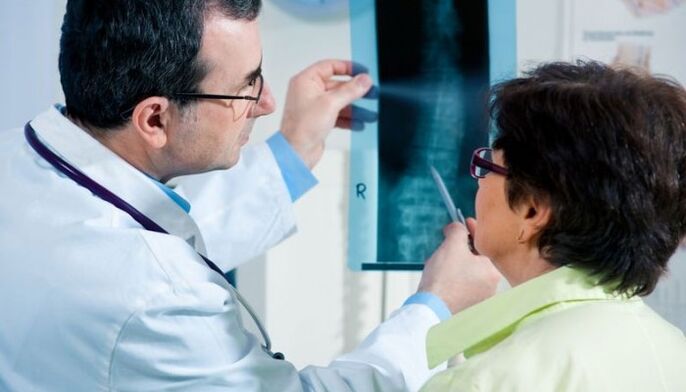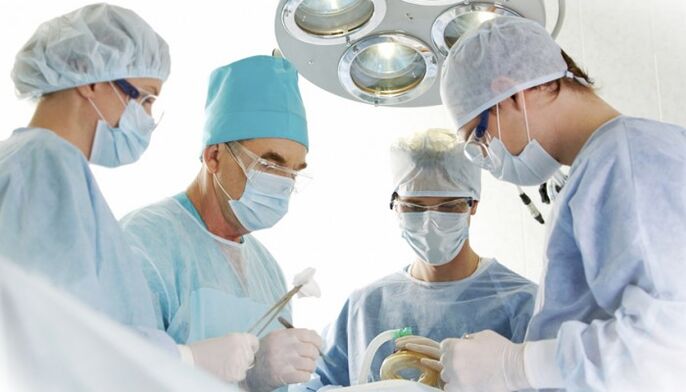Every second inhabitant of the earth faces back problems.Neck osteochondrosis is one of the most common diseases that require special attention.Lack of timely treatment can lead to serious consequences.In especially advanced cases, complications can cause death.
Internships
Osteochondrosis of the cervical spine in women and men develops gradually and has periods of increasing symptoms and remissions.Signs of the disease occur when the process of destruction of the vertebrae reaches a serious stage.
There are four degrees of cervical osteochondrosis:
- Initial stage.Characterized by disorders in the structure of intervertebral discs.Due to moisture loss, they become thinner.Cracks appear in the fibrous rings.Often at this stage there are practically no signs of cervical osteochondrosis.However, if the pathology can be identified, it is possible to completely restore the damaged intervertebral discs.The first stage of development of cervical osteochondrosis is considered very favorable for starting treatment.
- Second stageThe disease is associated with a worsening of the condition of the tissues of the intervertebral discs.They are significantly reduced in size.This causes sagging of the muscular corset and spinal ligaments.Instability of the cervical spine occurs and the mobility of the vertebrae increases.Often at this stage the first symptoms of osteochondrosis appear.
- In the third phasespinal deformation becomes obvious.Protrusions and hernias occur.Symptoms of cervical osteochondrosis become pronounced.
- Fourth stageaccompanied by the formation of osteophytes, ossification (ossification) of ligaments and other deformations.These signs of osteochondrosis are evidence that the body is trying by all means to stabilize the damaged segments of the spine.
The peculiarity of the cervical spine is the small distance between the vertebrae.When structural disorders occur in these segments, compression of the spinal cord, nerve endings and vessels of the circulatory system occurs.
Manifestations
Symptoms of cervical osteochondrosis may depend on which part of the spine the affected object is located.The following mechanisms of the negative impact of pathology, as well as associated symptoms of cervical osteochondrosis, are distinguished:
- Radicular syndrome.The pain is transmitted from the cervical spine to the fingers.There is a tingling sensation in different parts of the upper limbs and a chilling effect.
- Vertebral artery syndromecauses circulatory disorders in the brain.Accompanied by weakness, nausea, hearing and visual impairment and disorders of the vestibular system.It can cause sharp or throbbing headaches in the occipital, parietal, temporal and eyebrow regions.
- For cardiac syndromeThe symptoms of osteochondrosis can be confused with angina pectoris.Pain attacks can last several hours and are accompanied by extrasystole or tachycardia.
- Irritant reflex syndrome.This phenomenon causes acute attacks of pain in the back of the head or neck.Unpleasant sensations are transmitted to the shoulder or chest region.They appear during movement after a long period of rest.
It is unacceptable to ignore these signs of osteochondrosis of the cervical spine in men and women.
If such symptoms occur, you should contact a neurologist as soon as possible.
Types of diagnosis

Cervical osteochondrosis presents symptoms similar to many other pathologies.Therefore, before making a specific diagnosis, the doctor must find out exactly what symptoms the patient is worried about, and then conduct an examination.
Based on his observations, the specialist can make a preliminary diagnosis.But to more accurately establish the causes of the pathology, additional research is needed.The main methods for diagnosing cervical osteochondrosis are:
- Radiography.The most accessible instrumental method.Almost all clinics have a minimum technical base to carry out such a study.An X-ray provides information about the location and severity of the pathological process.Allows you to determine what consequences caused osteochondrosis of the cervical spine.To obtain a complete picture of the disease, x-rays are taken in different projections.
- Computed tomography.It allows you to visualize all changes in the structure of the spinal tissues, thanks to the possibility of examining layer by layer.Using this method, you can determine the stage of cervical osteochondrosis, the presence of protrusion and hernia.Computed tomography perfectly visualizes the condition of all components of the spinal region, with the exception of the intervertebral discs.
- MRI.The most accurate and informative method for diagnosing cervical osteochondrosis.The resulting images make it possible to assess the condition of the spinal segments, nerves and blood vessels.This becomes possible due to the absence of images of other organs in the projection.MRI helps to identify the location of damaged segments, establish tissue changes, narrowing of the spinal canal, as well as degenerative changes in the intervertebral disc, such as protrusion and hernia.
Treatment
Osteochondrosis of the cervical spine is associated with a degenerative disorder of the structure of the intervertebral discs, as well as the tissues and ligaments of the spine located next to them.Both women and men of all age groups can suffer from the disease.This is due to a large number of unfavorable factors, including a sedentary lifestyle, poor posture and poor nutrition.
The question of adequate treatment of cervical osteochondrosis is very relevant.Therapy can be conservative (in non-advanced cases) or surgical (sequestrated hernias).
If a patient has signs of osteochondrosis, the treatment regimen must be selected individually for each patient.The therapeutic program may depend on the following factors:
- stages of the disease;
- period of exacerbation or remission;
- individual characteristics of the patient.
Treatment of osteochondrosis should be prescribed by a doctor after a complete examination of the patient and an accurate diagnosis.
Conservative methods

The main goal of therapy for degenerative changes in the spine is to prevent the development of pathologies and complications.To obtain a favorable result in the treatment of cervical osteochondrosis, it is not enough to use a single method;It is important to use an integrated approach.
In the first stages of therapy, doctors' recommendations are aimed at eliminating pain and restoring circulatory function.At the next stage, you can move on to physiotherapeutic procedures, manual therapy and exercise therapy.
Types of conservative therapy include:
- Drug treatment.This method is characterized by the use of medications with different effects: analgesics, antispasmodics, non-steroidal anti-inflammatory drugs, vasodilators, chondoprotectors, sedatives, vitamins, minerals.Drug treatment may be prescribed during an exacerbation of the disease with significant pain and increased muscle tone.Cervical osteochondrosis can be treated with ointments or gels for only mild inflammation.In other cases, these measures are not effective.
- Physiotherapy.Treatment with physical factors (magnetic fields, ultrasound, low frequency currents) can be applied at any stage of the development of the pathology.Physiotherapeutic procedures help reduce pain, stimulate blood circulation, metabolism and also allow you to reduce medication doses.To cure cervical osteochondrosis, electrophoresis with drug administration, darsonval, ultrasound, laser therapy and magnetic therapy can be prescribed.Each of these types of physiotherapeutic procedures has its contraindications.For this reason, the treatment method must be chosen by a doctor.
- Manual therapy.The objectives of this method include normalizing muscle tone, improving blood circulation and eliminating deformities in the cervical spine.The therapeutic effect is achieved through the application of physical influence in the form of pressure, vibration and friction.To obtain a noticeable long-term effect, manual therapy must be combined with medication, physiotherapy and exercise therapy.
- Physiotherapy.The course of cervical osteochondrosis can be alleviated by performing a series of special exercises.This allows you to develop muscles and significantly reduce the load on damaged segments of the spine.A set of gymnastic exercises can only be selected by the attending physician, taking into account the characteristics of the patient.It is recommended to start classes under the supervision of a specialist.It is not advisable to practice physical therapy when pain occurs.
Surgical method

If cervical osteochondrosis does not respond to conservative treatment, surgical intervention may be necessary.Most often this occurs with spinal cord compression or herniated disc.
The purpose of the surgical operation is to eliminate compression of the nerve roots and blood vessels, as well as to stabilize the cervical spine.In this case, the following methods are used:
- Discectomy– complete or partial elimination of the intervertebral disc.The procedure is performed using microsurgical instruments.This reduces damage to surrounding tissue.
- Laser disk reconstruction.During the operation, a needle is inserted into the affected area and a special handle is passed through it.Under the influence of laser energy, the intervertebral disc heats up.This stimulates cell growth, and within 3 to 6 months they fill all the voids formed as a result of the disease.The operation is performed under local anesthesia.
- Arthrodesis.All manipulations are carried out through a small incision in the front or back of the neck.As a result of the operation, compression of the spinal cord and nerve endings is removed and artificial implants or special metal structures are installed.They correct the curvature line of physiological lordosis.
Cervical osteochondrosis can only be treated surgically in the most difficult cases of the disease.This is associated with a high risk of complications.Possible consequences of surgery include damage to nerve endings or the spinal cord, narrowing of the spinal canal as a result of scarring, development of infections and many other unpleasant consequences.
Prevention methods
Neck osteochondrosis can develop in women and men of any age.Many factors contribute to this.The occurrence of the disease can be prevented with simple preventive measures.To do this, just follow a few basic rules:
- Do not expose your spine to heavy loads.Avoid sudden movements and injuries, periodically change your body position, evenly distribute the load when moving heavy objects and choose comfortable shoes.
- Do gym exercises regularly to strengthen your neck muscles.
- Toughen up.
- Maintain a balance in your food intake.
- Give up bad habits.
It is important to remember that preventing the development of pathology is much easier than dealing with its lengthy and expensive treatment later.Following simple measures to prevent the disease will allow you to never know what cervical osteochondrosis is.

















































